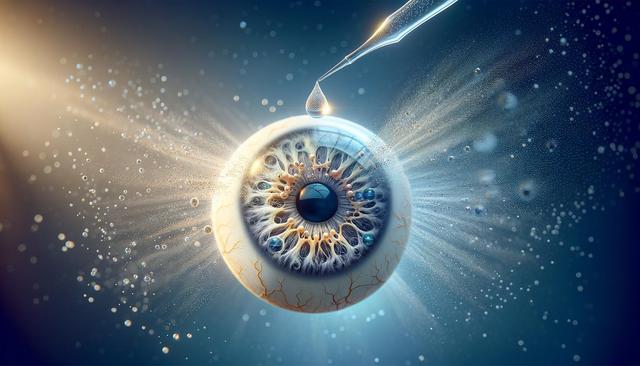Understanding Dry Eye Syndrome
Dry eye syndrome occurs when your eyes don’t produce enough tears or when the quality of your tears is poor. This leads to inflammation and irritation on the surface of the eye. It’s a widespread issue that can be triggered by several factors, including aging, environmental conditions, prolonged screen time, and certain medications. People who wear contact lenses or have had eye surgery may also be more susceptible to developing dry eyes.
Common symptoms include a stinging or burning sensation, redness, sensitivity to light, blurred vision, and a feeling of having something in your eyes. While the condition may be temporary for some, others experience chronic symptoms that need ongoing management. Understanding the root cause of the issue is essential for choosing the right dry eye treatment approach that brings relief and prevents further discomfort.
Medical Treatments and Eye Drops
There are several over-the-counter and prescription treatments available to manage dry eye symptoms. One of the most commonly recommended options is lubricating eye drops, often referred to as artificial tears. These help to supplement natural tear production and provide temporary relief. When choosing among the best drops for dry itchy eyes, it’s important to consider those without preservatives, especially for frequent use, as preservatives can sometimes cause additional irritation.
Other medical treatments include:
- Prescription eye drops that reduce inflammation or increase tear production
- Punctal plugs, which block tear drainage to keep more moisture on the eye’s surface
- Warm compresses and eyelid scrubs to treat underlying eyelid inflammation
- Oral medications that stimulate tear production
Consulting with an eye care professional is essential to determine the most suitable treatment plan, especially if over-the-counter solutions are not providing sufficient relief.
Natural Ways to Soothe Dry Eyes
For those seeking holistic or complementary approaches, there are several natural ways to soothe dry eyes that can be integrated into your daily routine. These methods aim to support eye health and promote natural tear production without relying solely on medication.
Some effective natural remedies include:
- Increasing omega-3 fatty acid intake through foods like flaxseed, salmon, and walnuts
- Maintaining hydration by drinking plenty of water throughout the day
- Using a humidifier to add moisture to dry indoor air
- Practicing regular blinking exercises, especially during screen use
- Applying warm compresses to help unclog oil glands in the eyelids
Incorporating these practices consistently may help reduce dryness and enhance the effectiveness of other treatments.
Lifestyle Adjustments for Long-Term Relief
Making lifestyle adjustments can go a long way in managing and preventing dry eye symptoms. Environmental factors and daily habits often contribute to the condition, and addressing these aspects can provide significant improvement over time.
Consider the following changes to support eye health:
- Limit screen time and take frequent breaks using the 20-20-20 rule (every 20 minutes, look at something 20 feet away for 20 seconds)
- Wear sunglasses to protect your eyes from wind and UV rays
- Avoid smoking and exposure to secondhand smoke, which can worsen dryness
- Use protective eyewear when in dusty or dry environments
- Adjust your workstation to reduce glare and improve ergonomics
These changes not only help alleviate symptoms but may also prevent further irritation and the need for more intensive treatments down the line.
When to Seek Professional Help
If natural remedies and over-the-counter options don’t provide adequate relief, or if symptoms worsen, it’s essential to consult an eye care professional. Chronic dry eye can lead to complications if left untreated, including damage to the eye’s surface, increased risk of infection, and a significant impact on quality of life.
During a comprehensive eye exam, your doctor may perform specific tests to evaluate tear production, tear quality, and any signs of inflammation. Based on this assessment, they can recommend a personalized treatment plan that may include a combination of therapies. Sometimes, underlying health conditions such as autoimmune disorders or hormonal imbalances contribute to dry eyes, and treating these root causes is crucial for long-term management.




Leave a Reply